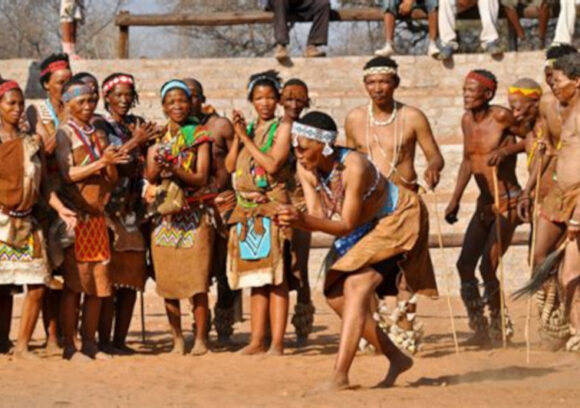The Tswana

The Tswana migrated from East Africa into central Southern Africa in the 14th century. They are closely related to the Sotho of Lesotho and South Africa and the two groups are bonded in language and customs. They claim a common ancestor, Mogale, and share an agrarian culture, social structures, political organisation, religious and magical beliefs and also a family life. All the Sotho and Tswana languages are inherently intelligible, but for political and historical reasons, they have generally been considered three
Traditional Tswana society included men, women, children and ‘badimo’ (ancestors – living dead – who have metaphysical powers). A Tswana doesn’t think in terms of individual rights but of responsibilities to his family and tribe. The father is to be obeyed and respected by his wife and children at all times. The Sotho-Tswana are organised by lineages, which developed as the tribe grew.
The lineages are organised in sub-units and communities. Every level exhibits the same social organisation, such as the Kgotla, the traditional court, with various officials assigned different duties in the social structure at each level. In traditional Tswana religion (tribal animism) Modimo is the great God, or The Great Spirit.
The Tswana are the smallest cultural group in Namibia and are quite distinct from the Tswana of Botswana. Their ascendants embarked on a thirstland trek through Botswana to settle in Namibia at the end of the nineteenth century, considerable numbers succumbing along the way.
Namibia’s Tswana are divided into three groups. The largest is the Tlharo, who originally came from Kuruman in the northern Cape. The second-largest group is the Tlhaping, ‘tlhapi’ meaning ‘fish’ in Tswana. The third and smallest group, the Bangologa, have mixed with the Kalahari Bushmen to some extent and are lighter in colour. Today they live in a triangle, with a line between Epukiro and Aminuis in the east as its base, and extending to Walvis Bay, its vertex, in the west. Most of them, however, live in the east of the country where they are involved in farming, many having bought farms north and south of the town.

